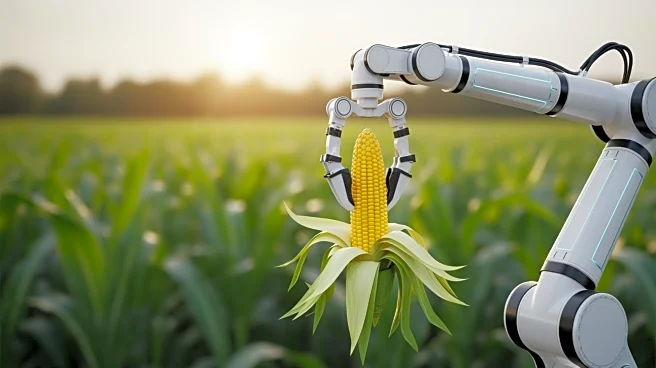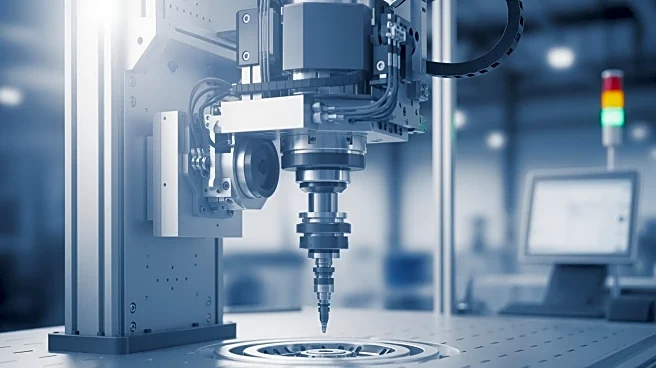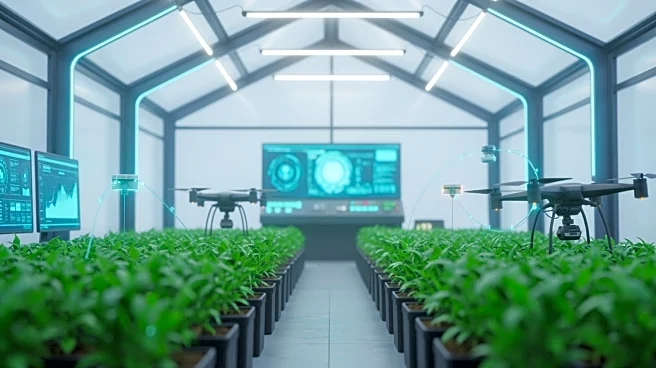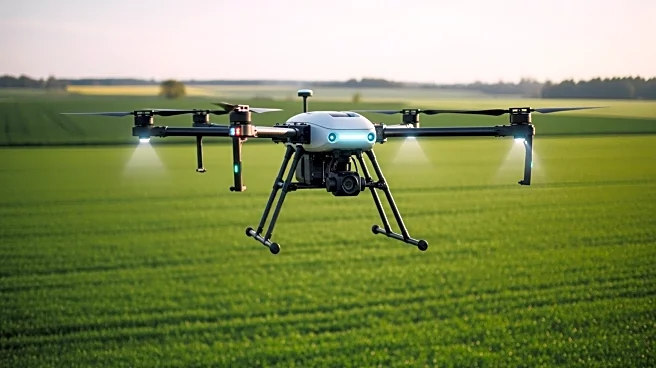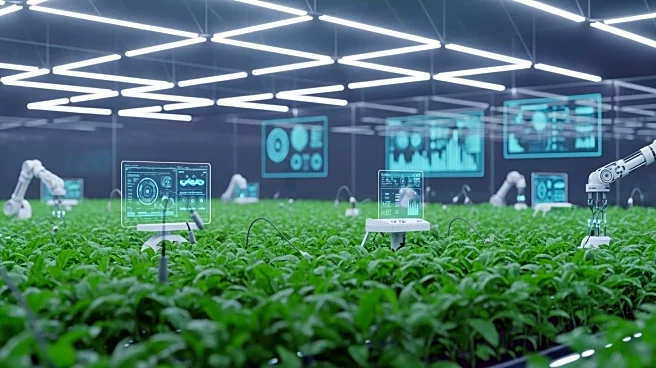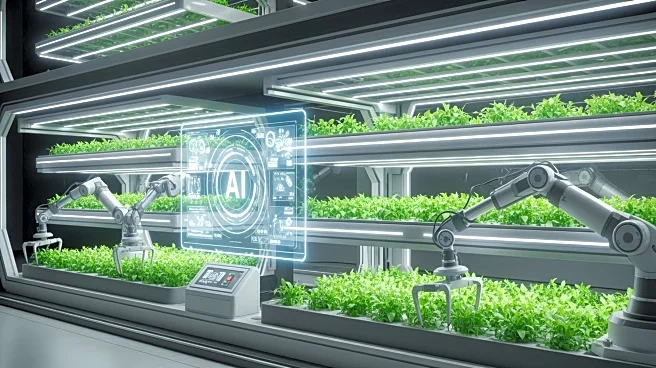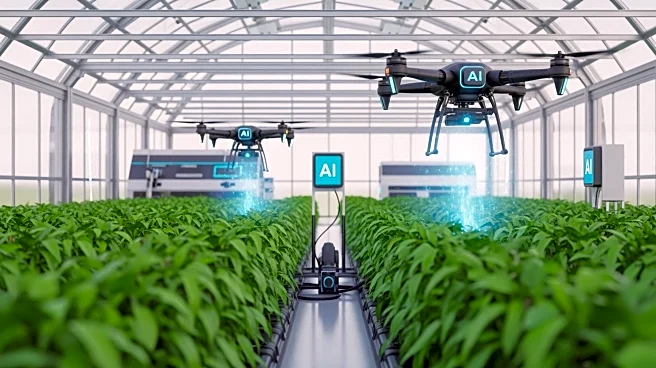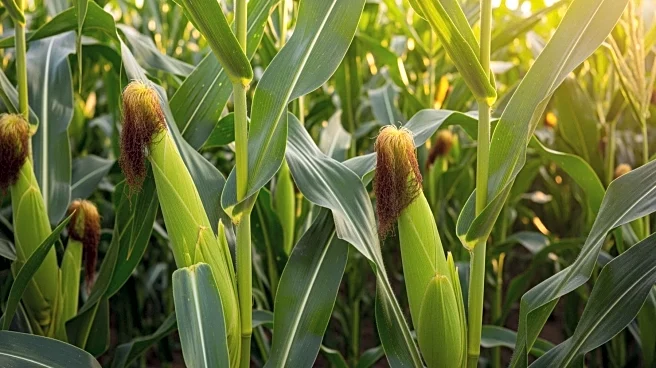What's Happening?
The agricultural equipment market is projected to grow significantly, reaching USD 301.81 billion by 2031, according to Verified Market Research. This growth is attributed to the increasing adoption of artificial intelligence (AI) and automation technologies,
which enhance efficiency, precision, and scalability in the agricultural sector. AI-powered analytics and predictive modeling are enabling companies to optimize operations, reduce waste, and anticipate market trends. Automation is streamlining repetitive processes, minimizing human error, and accelerating production timelines. The integration of AI into agricultural equipment is transforming the industry by allowing machinery to perform complex tasks autonomously, such as soil analysis and crop monitoring. This shift towards precision farming techniques is addressing challenges like labor shortages and environmental concerns.
Why It's Important?
The expansion of the agricultural equipment market is crucial for the U.S. economy, as it supports the agricultural sector, a significant contributor to the nation's GDP. The adoption of AI and automation in agriculture can lead to increased productivity and sustainability, addressing critical issues such as food security and environmental impact. Farmers and agricultural businesses stand to benefit from improved efficiency and reduced operational costs. However, the global semiconductor shortage poses a challenge, potentially affecting the availability and affordability of AI-enabled equipment. This could hinder adoption among smaller farms, highlighting the need for strategic investments and policy support to ensure equitable access to these technologies.
What's Next?
As the market continues to grow, key players in the agricultural equipment industry are likely to focus on developing more advanced AI-driven solutions. This includes enhancing the capabilities of autonomous machinery and expanding the use of precision farming techniques. Policymakers and industry leaders may need to address supply chain disruptions and invest in infrastructure and training to support the integration of AI technologies. The ongoing evolution of the market will require stakeholders to adapt to new trends and challenges, ensuring that the benefits of technological advancements are accessible to all segments of the agricultural community.
